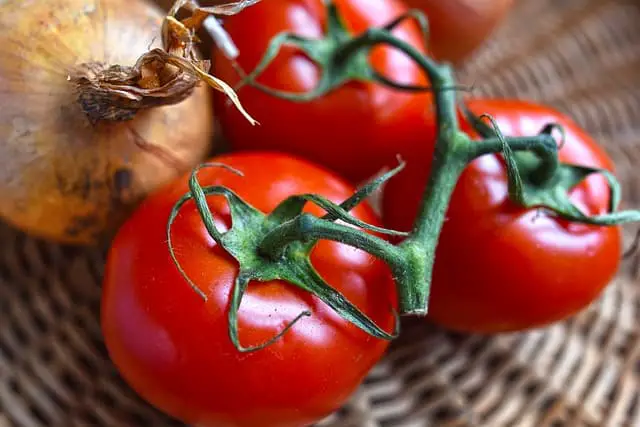One important part of making pasta is cooking the sauce. There really is more to it than just heating and serving. If you want to get really serious about making a great tomato sauce. Learn some of the basics and then delve deeper.
I wonder why a tomato sauce can take all day long to cook. When I make spaghetti dinner I don’t fret over the sauce too much. That is because the sauce is usually from the grocery store.
Fresh or true homemade tomato sauce is a game changer. Either way there is better ways to cook the sauce, getting the consistency right makes a difference. Not too watery but not too thick, that is the trick.
You can make a really awesome tomato sauce the next chance you get. First by starting with a common question.
Should tomato sauce be covered when cooking?
One reason for covering the sauce with a lid is to prevent splattering. Also a lid can be used to heat it up more quickly. This can help the sauce come to a boil faster. The excess liquid in the tomato sauce is suppose to be evaporated away.
I wrote a similar post that goes into more detail about reducing and cooking tomato sauce. Should I Cover Tomato Sauce While It Simmers?
Covering the sauce will trap moisture and can prevent it from thickening to the level you are after. If you are worried about the sauce making a mess. Leaving the lid ajar will still cover the sauce splatter and allow some of the moisture to evaporate.
Most store bought tomato sauces, also called pasta sauces. Can be heated up and cooked in a short period of time. This is because jarred sauces from big brands have been cooked. You don’t need to worry about letting them simmer for hours.
Homemade tomato sauce is different, since you are starting with raw tomatoes. It is usually cooked for several hours or more. If you see this being done they are not covering the sauces during the process. It would take too long.
If you plan to cook the tomato sauce in a shorter period of time. Less than an hour, you can cover with a lid until the sauce starts to boil. Then reduce heat and let sauce simmer uncovered.
So it does come down to what kind of sauce you are going to cook with. Homemade sauces require a lot more cooking time, jarred sauces have already been meticulously cooked in a facility or commercial kitchen.
Simmering the sauce uncovered is one way to thicken a watery sauce. If you are starting with a thick sauce, then it will be fine to cook with a lid on.
How Long To Cook Tomato Sauce
| Shortest Cooking Time | Longest Cooking Time |
| 5 – 10 mins | 1 – 5 hours |
Any meat sauces will need to be cooked at the longest cooking time. Also if you plan to cook a sauce for a long time, you may need to add additional water so it doesn’t turn into a paste.
The reason it may take longer is because of someone wanting to use a low heat. Other wise if you didn’t have to worry about splatter you could cook a sauce hotter and faster. A lid would have to off as well.
You can also use a shallower and wider pan to heat sauce much quicker. This will allow you to reduce the sauce a low temperature, but still much faster.
Depending on how you want your sauce to turn out. There is no set time exactly for how long to cook tomato sauce. If you are going for a thicker sauce with more complex flavors, then cook it for longer.
The longer you cook tomatoes the more acidic they will become. The trick is to get the sauce just acidic and sweet enough. Too acidic and it will lose its sweetness.
If your sauce is too acidic you can add sugar or baking soda. Sugar along with adding sweetness to unripened tomatoes, helps mask the acidity and give the taste more balance.
You don’t want a sauce that is purely sweet. The acidic flavor brings a sour taste, but the right amount is what you want. The two types of tastes can together make the sauce well rounded.
Raw tomatoes aren’t very acidic, but not cooking the sauce will produce a bland watery sauce.
The longer you cook a tomato sauce the more concentrated it will become.
How To Thicken Tomato Sauce
Reducing a sauce is the phrase for simmering and cooking the liquid away. Reducing a sauce means to make it thicker. Simmering is a soft boil that is suitable for a smaller pan of tomato sauce.
Because sauce will become like lava and the drops are big and super hot. Its like the sauce starts to explode almost.
Rolling boil or hard boil requires constant stirring. The sauce can easily start to burn if not stirred.
Generally it is a good idea to frequently stir any tomato sauce while cooking.
One problem is that it can take a long time. So there are some other methods to do in combination with simmering it uncovered.
What can be used to thicken the sauce?
1. Tomato Paste
Add tomato paste near the beginning or about halfway through cooking the sauce. This will help give the paste some more flavor, even though it is already cooked.
Just adding in the tomato paste to your sauce can alter the flavor. If you are using tomato paste to thicken its best to cook it with the sauce as much as possible. It will not reduce like tomato sauce will.
2. Cornstarch
You don’t need very much cornstarch, start with one teaspoon for each cup of sauce. Combine with equal parts of cold water (one tsp cornstarch – one tsp cold water). Before adding to the sauce, mix up the cornstarch and water.
Then once the two have created a “slurry” then you can add that into the sauce. You can do this in the last few minutes. One benefit of cornstarch is that it doesn’t have much flavor
3. Roux
Roux is a mixture of flour and fats. Most common is butter, but you can use other edible fats. For tomato sauce butter works really well.
Similar to cornstarch roux is made with equal parts flour and fat. Instead you slightly cook and stir the mix before adding to a sauce. Start with the melted fat and then add in the flour.
All purpose flour works for making roux. Use equal parts – 2 Tbsp butter and flour for every 1 cup of sauce.
4. Vegetables
Minced vegetables such as carrots, onions or mushrooms. You could also use celery, peppers, onions. Caramelized onions can work to thicken a sauce without adding to much texture or crunch.
Even a little bit of mashed potato can added to the sauce.
5. Breadcrumbs
Breadcrumbs shouldn’t alter the flavor of the sauce. Unless you make or buy seasoned breadcrumbs. They will thicken the sauce by absorbing a lot of the moisture. You will need a lot of breadcrumbs to thicken the sauce. About 1/3 cup for every 1 cup of sauce.
6. Cheese
Shredded or grated cheese can be added into the sauce to thicken it. Parmesan, Romano or mozzarella cheese. Make sure to add them early on to help get them to melt into the sauce. You don’t need to use much.
Cheese will alter the flavor of the sauce. It also can be added at the very end. It can help hold a sauce together with meat and large pieces of vegetables.

